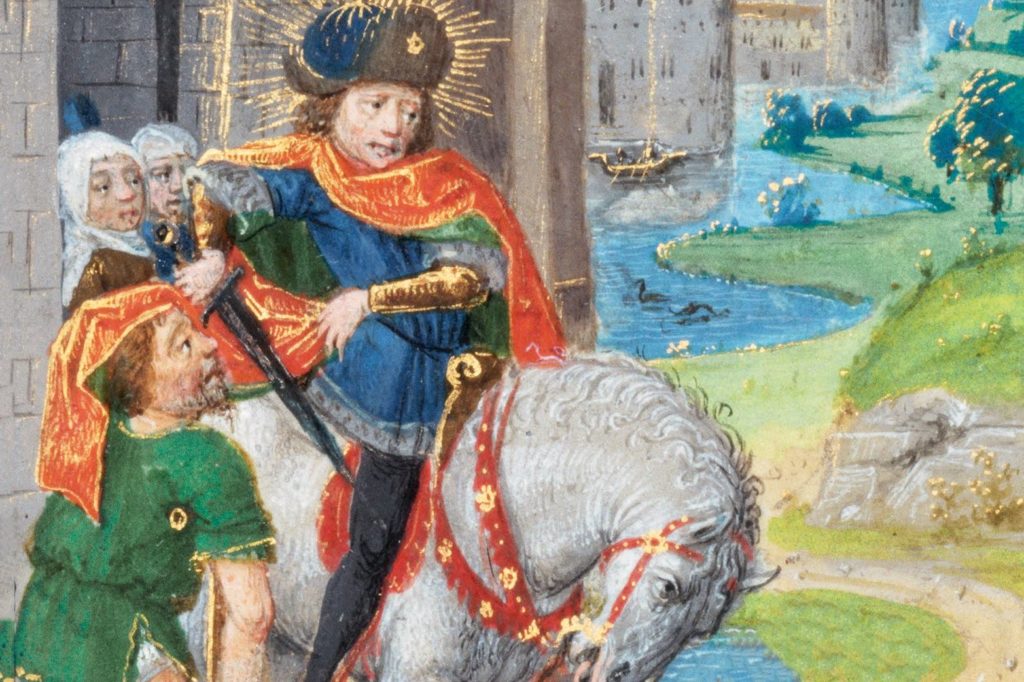
“As one of the Works of Mercy enumerated in Matthew was to clothe the naked, [the story of Martin sharing his cloak] was often used to encourage the faithful to do the same . . . In a Florentine manuscript . . . datable to c. 1340 . . . an image of Saint Martin dividing his cloak is paired with an allegory of the Virtue of Mercy, a woman watering a tree, that was used to illustrate the merciful act of clothing the naked. An inscription elucidates the connection: ‘Just as water maintains the vigor of a tree’s roots, causing it to grow in strength and fruits, and to sprout and flower according to its nature, so does mercy serve to make the soul joyful and virtuous in the other virtues.’ ”
—Katherine T. Brown, Mary of Mercy in Medieval and Renaissance Italian Art: Devotional Image and Civic Emblem (New York: Routledge, 2017), p 88
[Image: Detail from “St. Martin Dividing His Cloak” by Lievan van Lathem (15th Cent.), illuminated manuscript]
